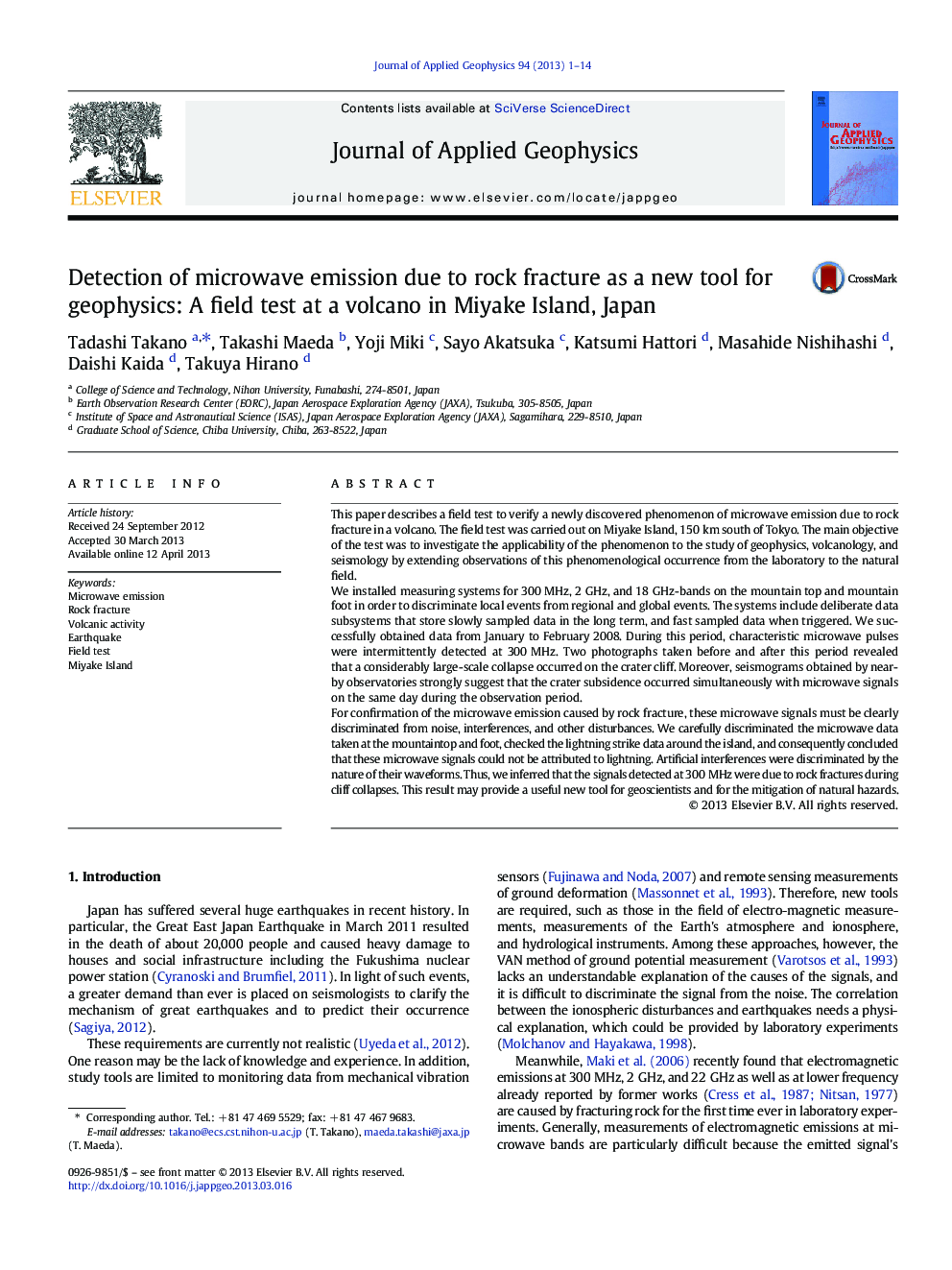| Article ID | Journal | Published Year | Pages | File Type |
|---|---|---|---|---|
| 4740317 | Journal of Applied Geophysics | 2013 | 14 Pages |
•Radiowave signals at 300 MHz were detected due to rock cliff collapse in a volcano.•The signals were well correlated with the cliff change and quakes around the crater.•The signals were discriminated from lightning and artificial interferences.•Measuring system includes antennas and receivers, a memory and a communication link.•The detection method can be applied to geophysics, volcanology, and seismology.
This paper describes a field test to verify a newly discovered phenomenon of microwave emission due to rock fracture in a volcano. The field test was carried out on Miyake Island, 150 km south of Tokyo. The main objective of the test was to investigate the applicability of the phenomenon to the study of geophysics, volcanology, and seismology by extending observations of this phenomenological occurrence from the laboratory to the natural field.We installed measuring systems for 300 MHz, 2 GHz, and 18 GHz-bands on the mountain top and mountain foot in order to discriminate local events from regional and global events. The systems include deliberate data subsystems that store slowly sampled data in the long term, and fast sampled data when triggered. We successfully obtained data from January to February 2008. During this period, characteristic microwave pulses were intermittently detected at 300 MHz. Two photographs taken before and after this period revealed that a considerably large-scale collapse occurred on the crater cliff. Moreover, seismograms obtained by nearby observatories strongly suggest that the crater subsidence occurred simultaneously with microwave signals on the same day during the observation period.For confirmation of the microwave emission caused by rock fracture, these microwave signals must be clearly discriminated from noise, interferences, and other disturbances. We carefully discriminated the microwave data taken at the mountaintop and foot, checked the lightning strike data around the island, and consequently concluded that these microwave signals could not be attributed to lightning. Artificial interferences were discriminated by the nature of their waveforms. Thus, we inferred that the signals detected at 300 MHz were due to rock fractures during cliff collapses. This result may provide a useful new tool for geoscientists and for the mitigation of natural hazards.
